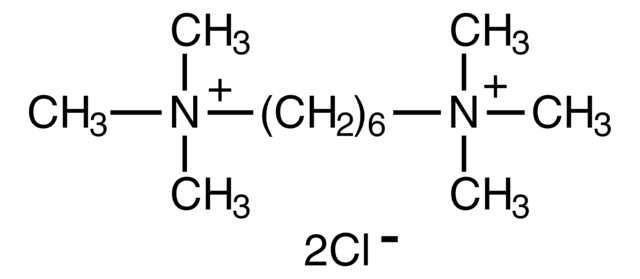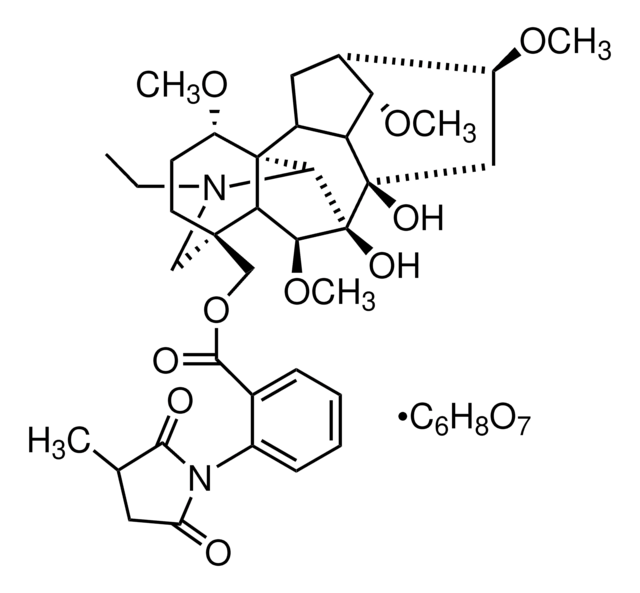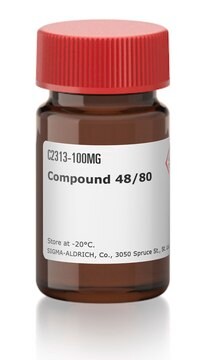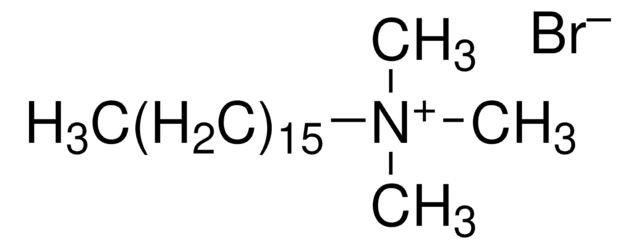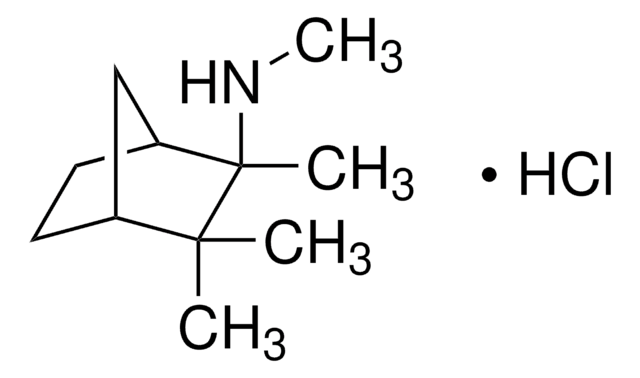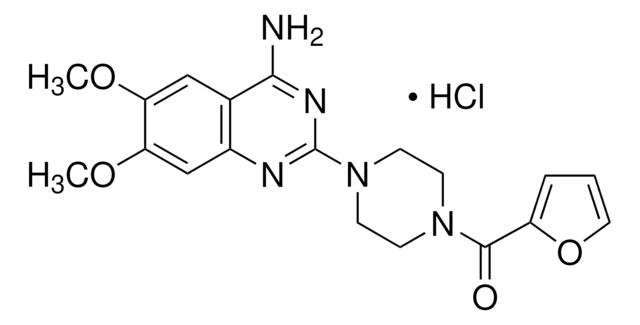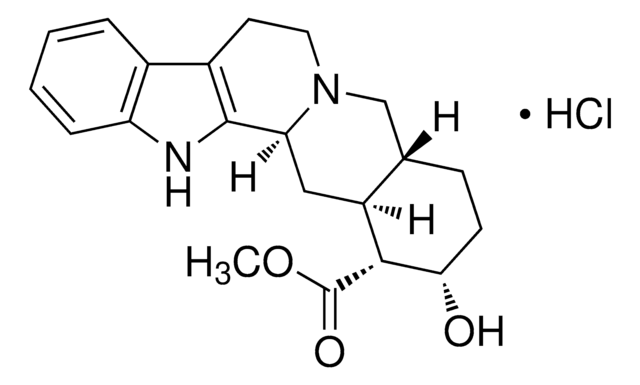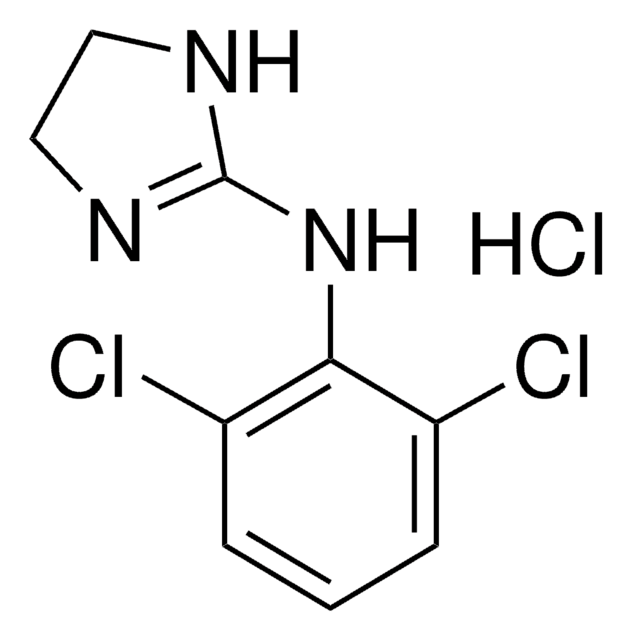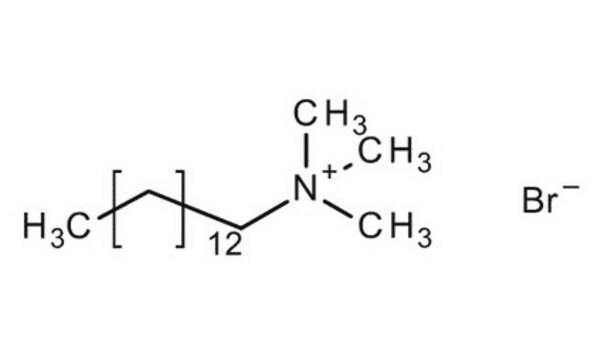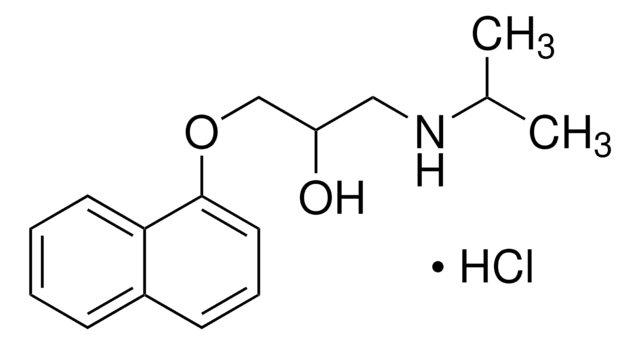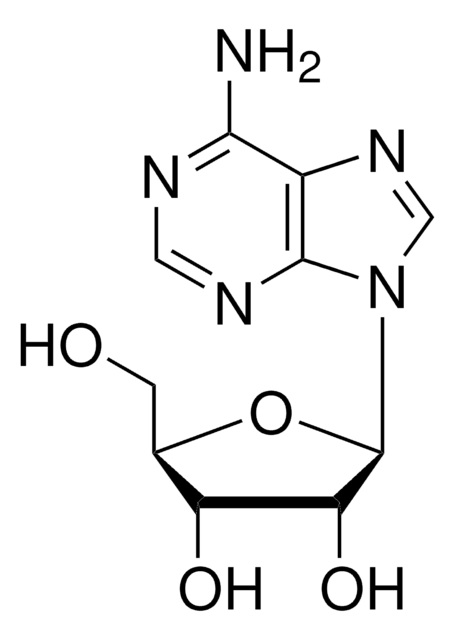H0879
Hexamethonium bromide
Synonyme(s) :
Hexane-1,6-bis(trimethylammonium bromide), N,N,N,N′,N′,N′-Hexamethylhexamethylenediammonium dibromide
About This Item
Produits recommandés
Niveau de qualité
Pf
282-285 °C (dec.)
Chaîne SMILES
[Br-].[Br-].C[N+](C)(C)CCCCCC[N+](C)(C)C
InChI
1S/C12H30N2.2BrH/c1-13(2,3)11-9-7-8-10-12-14(4,5)6;;/h7-12H2,1-6H3;2*1H/q+2;;/p-2
Clé InChI
FAPSXSAPXXJTOU-UHFFFAOYSA-L
Informations sur le gène
human ... CHRNA1(1134) , CHRNA10(57053) , CHRNA2(1135) , CHRNA3(1136) , CHRNA4(1137) , CHRNA5(1138) , CHRNA6(8973) , CHRNA7(1139) , CHRNA9(55584) , CHRNB1(1140) , CHRNB2(1141) , CHRNB3(1142) , CHRNB4(1143)
Vous recherchez des produits similaires ? Visite Guide de comparaison des produits
Application
- as an autonomic ganglia-blocking agent to study its effects on whisker movement in rats
- as a nicotinic receptor antagonist to study its effects on antigen-induced arthritis (AIA) progression in mice
- as a non-selective ganglionic nicotinic acetylcholine receptor (nAChR) antagonist to study its effects on cytisine-induced autonomic cardiovascular responses in mice
Actions biochimiques/physiologiques
Caractéristiques et avantages
Code de la classe de stockage
11 - Combustible Solids
Classe de danger pour l'eau (WGK)
WGK 2
Point d'éclair (°F)
Not applicable
Point d'éclair (°C)
Not applicable
Équipement de protection individuelle
Eyeshields, Gloves, type N95 (US)
Faites votre choix parmi les versions les plus récentes :
Déjà en possession de ce produit ?
Retrouvez la documentation relative aux produits que vous avez récemment achetés dans la Bibliothèque de documents.
Les clients ont également consulté
Notre équipe de scientifiques dispose d'une expérience dans tous les secteurs de la recherche, notamment en sciences de la vie, science des matériaux, synthèse chimique, chromatographie, analyse et dans de nombreux autres domaines..
Contacter notre Service technique